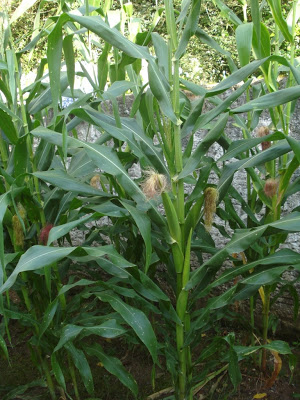- Urinary tract stones, with
Lygodium
japonicum- Hai jin sha.
[1] A Complete English Dictionary of Medicinal Terms in Chinese Acupuncture
and Herbalism 1981 - Henry Lu Chinese Foundations of Natural Health- The Academy
of Oriental Heritage, Vancouver, Canada.
[2] Medicated Diet of Traditional Chinese Medicine - Chief Editor- Hou Jinglun.
Associate Editors- Zhao Xin, Li Weidong, Liu Jianxin, Geng Chun-e, Li Guohua,
Li Shaohua. Geijing. Science & Technology Press 1994. ISBN 7-5304-1735-5/R.
309.
[3] Chinese System of Food Cures Prevention and Remedies. 1986 Lu, Henry. Sterling
Publishing Co., Inc. New York. USA. Distributed in Australia by Capricorn Book
Co. Pty Ltd. Lane Cove, NSW. ISBN 0-8069-6308-5.
[4] Translation notes from Gary Seiford and Hocu Huhn- NSW College of Natural
Therapies. Sydney Australia (1982).
[5] Chinese Herbal Medicine Materia Medica- Dan Bensky and Andrew Gamble- Eastland
Press 1986 Seattle Washington ISBN 0-939616-15-7
Images
1.
picasaweb.google.com.
Retrieved 17-June-14
2.
tcm.health-info.org
Retrieved 23-June-14
3.
en.wikipedia.org
by Butko CC BY-SA 3.0
4.
tcmwiki.com
Corn silk: Saponins.[3,4]
Allantoin.[4]
Sterols- especially b-sitosterol and stigmasterol.[4,,6]
Alkaloids-[5] hordenine. Maizeric
acid.[1] Volatile alkaloid.[1]
Fixed oil.[1] Resins.[1,6]
Vit C and K, Sugars, anthocyanins,
plant acids.[3,4,5,6] Saponins.[6]
Plant acids; Malic acid.[6] Palmitic
acid.[6] Tartaric acid.[6]
Oxalic acid.[6] Panthothenic acid.[6]
Cryptoxanthin.[3,4,6]
References
[1] British Herbal Pharmacopoeia 1983 Published by the British
Herbal Medicine Association ISBN 0 903032 07 4.
[2] Herbal Materia Medica Course Notes For Diploma of Naturopathy and Diploma
of Herbalism Students by Lydia Mottram.
[3] Encyclopedia of Common Natural Ingrdients used in Food Drugs and Cosmetics,
Albert Y. Leung. Pub. John Wiley & sons Inc (1980) NY
[4] Guide des Plantes Medicinales, P. Schauenberg and F. Paris. Pub. Delachaux
et Niestle (1969) Switzerland
[5] Pharmacology and Applications of Chinese Materia Medica Vol 1. Ed. H.
Chan and P. But. Pub. World Scientific (1986) Singapore
[6] Chinese Herbal Medicine Materia Medica- Dan Bensky and Andrew Gamble-
Eastland Press 1986 Seattle Washington ISBN 0-939616-15-7
 Zea
mays.
玉 米 Yù
mǐ Corn Family:
Gramineae
Zea
mays.
玉 米 Yù
mǐ Corn Family:
Gramineae


